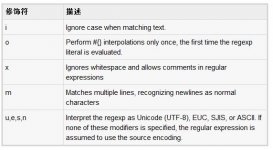避免改动缺省的 ActiveRecord(表的名字、主键,等等),除非你有一个非常好的理由(像是不受你控制的数据库)。
把宏风格的方法放在类别定义的前面(has_many, validates, 等等)。
偏好 has_many :through 胜于 has_and_belongs_to_many。 使用 has_many :through 允许在 join 模型有附加的属性及验证
|
1
2
3
4
5
6
7
8
9
10
11
12
13
14
15
16
17
18
19
20
21
22
23
24
|
# 使用 has_and_belongs_to_many class User < ActiveRecord::Base has_and_belongs_to_many :groups end class Group < ActiveRecord::Base has_and_belongs_to_many :users end # 偏好方式 - using has_many :through class User < ActiveRecord::Base has_many :memberships has_many :groups, through: :memberships end class Membership < ActiveRecord::Base belongs_to :user belongs_to :group end class Group < ActiveRecord::Base has_many :memberships has_many :users, through: :memberships end |
使用新的 "sexy" validation。
当一个惯用的验证使用超过一次或验证是某个正则表达映射时,创建一个惯用的 validator 文件。
|
1
2
3
4
5
6
7
8
9
10
11
12
13
14
15
|
# 差class Person validates :email, format: { with: /^([^@\s]+)@((?:[-a-z0-9]+\.)+[a-z]{2,})$/i }end# 好class EmailValidator < ActiveModel::EachValidator def validate_each(record, attribute, value) record.errors[attribute] << (options[:message] || 'is not a valid email') unless value =~ /^([^@\s]+)@((?:[-a-z0-9]+\.)+[a-z]{2,})$/i endendclass Person validates :email, email: trueend |
所有惯用的验证器应放在一个共享的 gem 。
自由地使用命名的作用域(scope)。
|
1
2
3
4
5
6
|
class User < ActiveRecord::Base scope :active, -> { where(active: true) } scope :inactive, -> { where(active: false) } scope :with_orders, -> { joins(:orders).select('distinct(users.id)') } end |
将命名的作用域包在 lambda 里来惰性地初始化。
|
1
2
3
4
5
6
7
8
9
10
11
12
13
14
15
|
# 差劲class User < ActiveRecord::Base scope :active, where(active: true) scope :inactive, where(active: false) scope :with_orders, joins(:orders).select('distinct(users.id)')end# 好class User < ActiveRecord::Base scope :active, -> { where(active: true) } scope :inactive, -> { where(active: false) } scope :with_orders, -> { joins(:orders).select('distinct(users.id)') }end |
当一个由 lambda 及参数定义的作用域变得过于复杂时,更好的方式是建一个作为同样用途的类别方法,并返回一个 ActiveRecord::Relation 对象。你也可以这么定义出更精简的作用域。
|
1
2
3
4
5
|
class User < ActiveRecord::Base def self.with_orders joins(:orders).select('distinct(users.id)') endend |
注意 update_attribute 方法的行为。它不运行模型验证(不同于 update_attributes )并且可能把模型状态给搞砸。
使用用户友好的网址。在网址显示具描述性的模型属性,而不只是 id 。
有不止一种方法可以达成:
覆写模型的 to_param 方法。这是 Rails 用来给对象建构网址的方法。缺省的实作会以字串形式返回该 id 的记录。它可被另一个具人类可读的属性覆写。
|
1
2
3
4
5
|
class Person def to_param "#{id} #{name}".parameterize endend |
为了要转换成对网址友好 (URL-friendly)的数值,字串应当调用 parameterize 。 对象的 id 要放在开头,以便给 ActiveRecord 的 find 方法查找。
* 使用此 friendly_id gem。它允许藉由某些具描述性的模型属性,而不是用 id 来创建人类可读的网址。
|
1
2
3
4
5
|
Rubyclass Personextend FriendlyIdfriendly_id :name, use: :sluggedend |
查看 gem 文档获得更多关于使用的信息。




